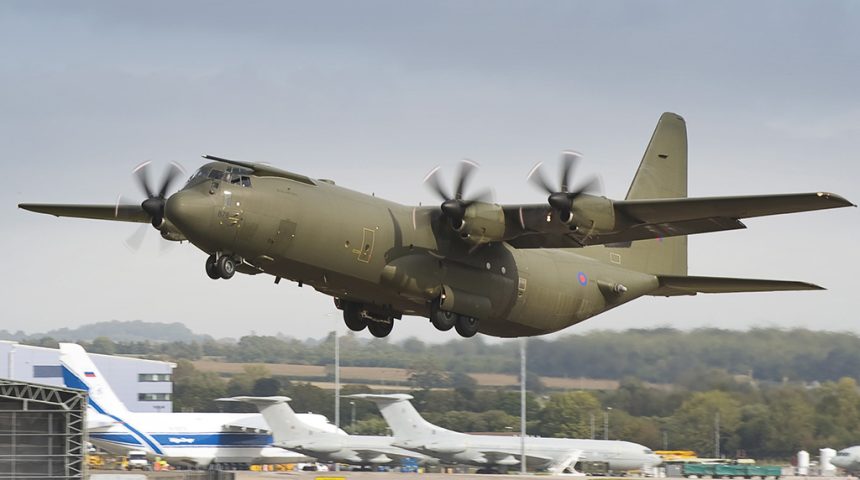The plan to phase out the RAF C-130 Hercules fleet in a couple of years has been made official.
The news, first disclosed by a Financial Times article titled “RAF Hercules fleet to be axed under plans to modernise Britain’s military” by the Financial Times on Mar. 20, 2021, has been eventually made official today, when the UK Ministry of Defence (MOD) released its Defence Command Paper, “Defence in a competitive age” that states:
“The Royal Air Force will retire the BAe146 as planned by 2022 and take the C130 Hercules out of service by 2023. The A400M Atlas force will increase its capacity and capability, operating alongside C 17 Globemaster and Voyager transport aircraft and tankers.”
Therefore, within the next two years, as a consequence of the largest Defence review since the Cold War, the remaining 14 C-130J aircraft, which first entered active service with the RAF in the late 1990s, will be retired earlier than originally planned. Indeed, the Hercules were initially thought to remain in service until the mid-2030s, if not more.
Say goodbye to the @RoyalAirForce‘s Lockheed Martin C-130J #Hercules fleet. The UK operated around 85 C-130s through its 60-year career with the RAF in K and J-models. C-130J will be gone by the end of 2023. pic.twitter.com/nA9DWrglZc
— Tony Osborne (@Rotorfocus) March 22, 2021
Since 1999, the Hercules has been the RAF’s primary tactical transport aircraft, often referred to as the workhorse of the RAF’s Air Transport (AT) fleet. The current mix of C.Mk 4 and C.Mk 5 versions of the C-130J-30 and C-130J is operated by Nos 206, 47 and XXIV Squadrons at RAF Brize Norton in various roles: they are used primarily to carry troops, passengers or freight; for aeromedical evacuation; airborne delivery of personnel or stores by airdrop, and support to Special Operations.
According to the RAF website: “The aircraft is highly flexible, with the ability to airdrop a variety of stores and paratroopers, and operate from natural surface landing zones. To conduct these missions it is vital that Hercules crews are highly skilled in low-level flying. The aircraft performs in the same roles at night using night-vision goggles (NVGs), while station keeping equipment (SKE) enables it to remain in formation during poor weather. Long-range capabilities are enhanced with air-to-air refuelling, while the Air Survival Rescue Apparatus may be mounted in the cabin for search and rescue missions, enabling the Hercules to airdrop life rafts and emergency supplies.”
The aircraft is particularly valuable in crisis scenarios as it can be operated from unprepared and semi-prepared surfaces by day or by night. Its maximum unrefuelled ferry range is 3500 NM, which can be extended to over 4000NM by air-to-air refuelling. Moreover, the C-130s are fitted with defensive infrared countermeasure equipment, with some aircraft used for special tasks also featuring enhanced defensive-aids suite comprising a Skyguardian radarwarning receiver, a chaff and flare countermeasure dispensing system and a missile approach warning system.
Ten years ago, during the Libyan crisis which eventually led to the Air War in Libya, the RAF C-130s were tasked to rescue oil workers that were trapped in the desert. The airlifters took off from Malta and flew over the Mediteranean, called Tripoli air traffic control, explained who they were and what they were up to, they got no reply from the controllers, therefore continued at low level once over the desert and in hostile airspace.
The C-130Js’ workload should be mainly picked up by A400M Atlas transports (20 of those are already in service with RAF with plan to order at least two more). The service has received its first of 22 Atlas on Nov. 14, 2014. The Atlas aircraft are assigned to the Nos 70 Sqn and the 24 Sqn, that is Air Mobility Operational Conversion Unit. The 206(R) Sqn, acting as the Heavy Aircraft Test and Evaluation Unit, based at MoD Boscombe Down but with a flight detachment at RAF Brize Norton flies the A400M on loan from other squadrons when required to undertake specific testing activities.









